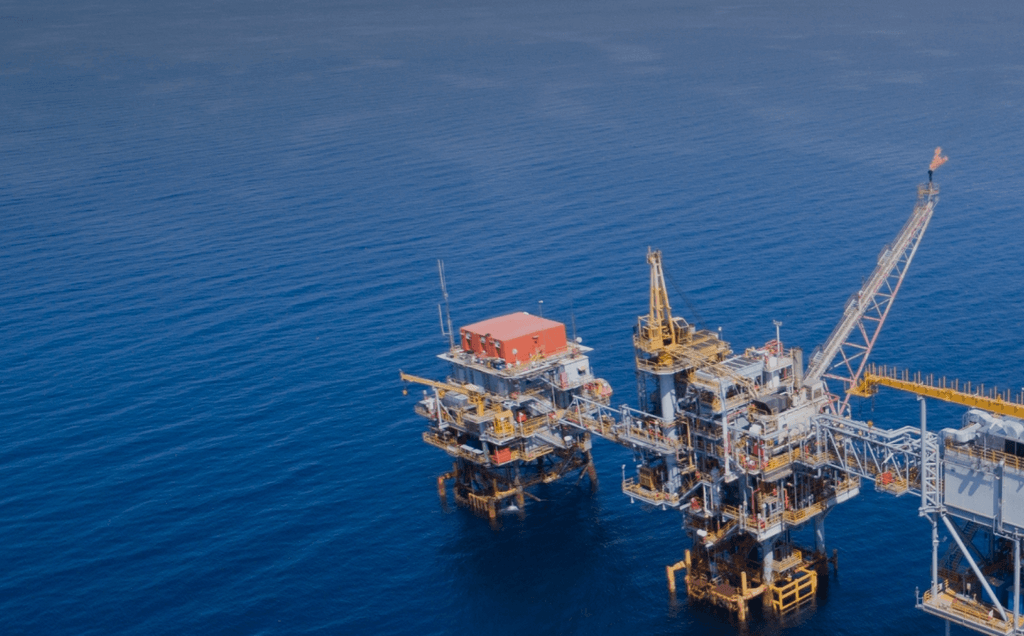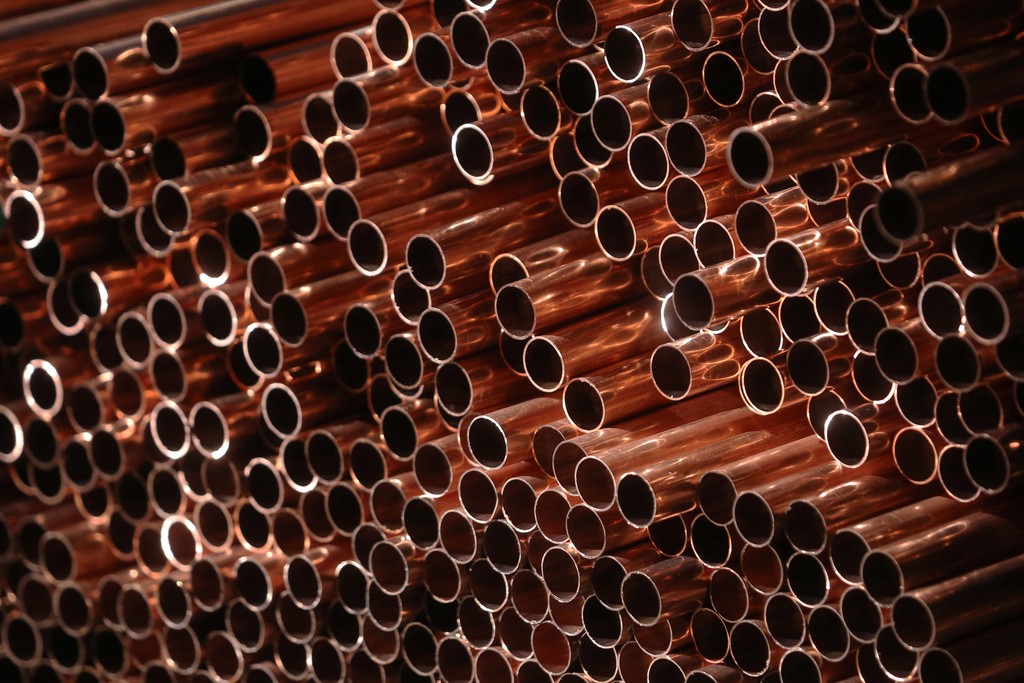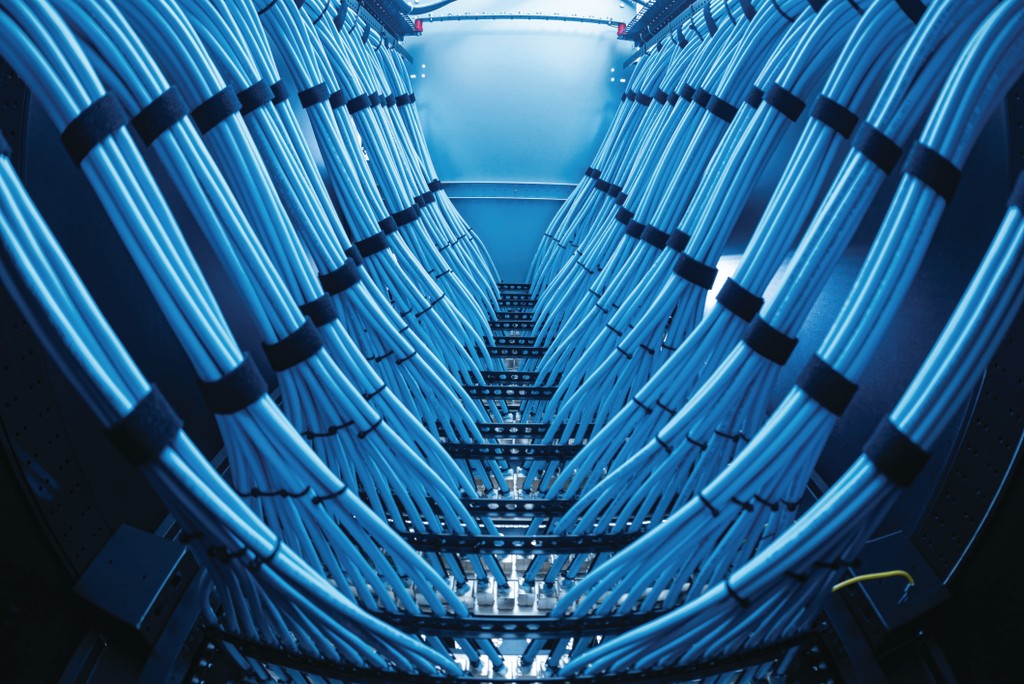Michael Liebreich
Senior Contributor
BloombergNEF
We need to talk about nuclear. And I mean really talk, in a truth-and-reconciliation, moving-forward kind of way, not a let’s-all-shout-slogans-at-each-other, my-tribe-versus-your-tribe kind of way. Serious people are finally talking about decarbonizing national economies by mid-century, but such talk must be accompanied by credible plans – and no plan can be considered credible if it does not deal explicitly with nuclear power.
If nuclear is in, what role will it play in the energy system? How are you going to ensure plants are affordable, built on time and to budget? How are you going to fund it? What are your assumptions about new nuclear technologies? And what is your long-term plan for nuclear waste?
If nuclear is out, then how are you proposing to meet the world’s growing energy needs? Not just current electricity demand, but also the power required to electrify transport, heating and industry? And not just when it is sunny or windy, but all day every day, every week, every month, every season?
The Green New Deal – as proposed earlier this year by Representative Alexandria Ocasio-Cortez and Senator Ed Markey, co-sponsored by 92 Representatives, 12 Senators and dozens of prospective Democratic presidential candidates – is silent on nuclear. That is not credible. In or out? Maintain or shut existing plants? New build or no new build? Invest in the next generation of technologies or not?
So let’s talk about nuclear power. Before we do, a “trigger warning”: whether you are a lifelong anti-nuclear campaigner or the technology’s most ardent fan, this might be uncomfortable. Are we ready?
The scale of the challenge
Let’s start by reminding ourselves of the scale and urgency of the decarbonization challenge.
As I explained in my piece Two Business Cycles to Prepare for a Low-Carbon World, the Intergovernmental Panel on Climate Change (IPCC) report of October last year showed that keeping the global economy on a trajectory consistent with 2 degrees Celsius of warming requires a 20% emissions reduction by 2030, while limiting it to a 1.5C temperature increase would require a 45% reduction. For context, in the past 18 years, global energy-sector carbon emissions grew by more than 40%.
The electricity sector is the largest global driver of carbon emissions – responsible for 42% of CO2 and most likely a bigger proportion of fugitive methane. Any plan for emission reductions by the end of the next decade has to have the electricity sector at its heart. Not only is it the biggest source of emissions, but it is also the one with the most market-ready solutions.
The global power sector generated more than 26,000TWh in total in 2018. Nuclear power provided 10%, according to BloombergNEF. Fossil fuels contributed 63%, with coal the largest source at 37% and gas the next biggest at 23%. Taken together, renewable sources delivered 26%, but their biggest contributor was hydro, at 16% of the total. Wind and solar accounted for 4.8% and 2.2% respectively – just 7% between them.
Respect where it is due: providing 7% of global electricity is an extraordinary achievement for wind and solar. They got there from a standing start at the turn of the century, having overcome immense initial cost disadvantages and driven an almost complete overhaul of technical standards and market structures – and done it in the face of aggressive pushback from cash-rich incumbents.
But let that sink in: 20 years of extraordinary growth and getting on for $3 trillion of investment, and wind and solar still produce only 7% of the world’s power and meet only 3% of its final energy needs. When it comes to those 2030 targets for decarbonizing the global energy system, that is hardly a particularly convincing springboard.
If your plan to deliver a 20% or 45% emission reduction in the electrical sector – targeting 2 degrees Celsius or 1.5 degrees Celsius of warming respectively – is via wind and solar alone, assuming some moderate level of economic growth, you would have to add two to four times as much capacity in the next decade as has been added in total in the last two decades. BNEF’s recently-released New Energy Outlook 2019 shows that, while we could hit the lower end of that range, it is highly unlikely we will hit the higher end of the range on the current trajectory.
But it gets worse. As we have seen, electricity is responsible for only 42% of the emissions from the entire energy system. The roads to emission reductions in heating, transport and industry also run through electricity – whether directly, via carbon capture and storage (CCS) or via some version of power-to-gas. If you translate the 20-45% decarbonization target for the total energy system into a target for the power sector, you will find that it has to deliver a 30% or 90% emission reduction by 2030 to stay on track for a 2 degrees or 1.5 degrees trajectory respectively. That would mean building an additional 10 to 15 times current installed capacity of wind and solar.
Wait, you say, we’re been ignoring energy efficiency. Fine. The International Energy Agency (IEA) has just launched the Global Commission for Urgent Action on Energy Efficiency, on which I am delighted to serve. Let’s say we hit it out of the park, and the world reduces energy intensity by an additional quarter relative to business as usual over the next decade – a rate of improvement never yet demonstrated over a sustained period in any major economy in peace time. You would still need to build five to 10 times the existing cumulative capacity – in fact more than that, given that such a huge and rapid increase in wind and solar capacity would likely be accompanied by some increased level of curtailment.
You are proposing to build five to 10 times the total global cumulative capacity of wind and solar, in just 11 years? And now, are you still sure you want to be shutting down existing nuclear power stations at the same time?
The beauty of nuclear power
Last year, EON’s Isar-2 nuclear power plant in Bavaria produced 11.5TWh of electricity. Built in 1988, it is the second-most productive nuclear power station in the world. By comparison, all 6,100 wind turbines in Denmark only generated 13.9TWh. Yes, one well-run German nuclear power station produced 83% as much zero-carbon power in 2018 as all the wind turbines in Denmark. If Isar-2’s operating life could be safely extended to 60 years, it would keep churning out huge amounts of zero-carbon electricity until 2048. But no, it is due to shut in 2022 as part of the Energiewende.
By 2018, renewable energy contributed an impressive 36% of power delivered to German consumers. However, it also contributed 34% of U.K. power. While the U.K. maintained its nuclear capacity at the same time as adding renewable resources and saw its CO2 intensity more than halve to 222 gCO2/kWh, Germany chose to shut its nuclear power stations, leaving it with a CO2 emissions intensity over twice as high, at 490 gCO2/kWh. Had Germany shut its coal plants instead, its power system could by now be at just over 300 gCO2/kWh. France’s electricity system, with its 72% dependency on nuclear power, famously boasts emissions intensity of less than 100 gCO2/kWh.
Waiting until 2038 to eliminate German coal power, as proposed by last year’s Coal Commission, is simply not consistent with a 2-degree warming trajectory. I realize that there is no appetite in Germany to relitigate the closure of its nuclear power stations. That is nothing short of a climate tragedy, and German anti-nuclear activists will be weighed in the same scales by history as fossil fuel promoters. Even if the remaining seven German nuclear plants are beyond saving, it is vital that other countries do not follow Germany’s lead and close existing, high-performing, safe nuclear power stations.
Did I say safe? Yes, safe. Because by any objective measure, nuclear power is one of the safest energy technologies. In one 2016 study, coal power was estimated to kill 224 people – through mining and road accidents, air and water pollution – for every TWh produced, over 2,000 times more than solar, wind and nuclear power.
Usually, at this point in the discussion, the anti-nuclear folk jump in to explain that nuclear power is unaffordable. But that is simply not so for existing plants – many of which are fully depreciated. Last year, the US Nuclear Energy Institute estimated the average cost of power from the US’s existing nuclear fleet at $33.50 per MWh. The IEA has just published a report entitled Nuclear Power in a Clean Energy System, in which it estimates that even if you add in the costs of passing a deep safety review every ten years and any necessary upgrades, the resulting power cost would only be $40-55 per MWh. That is, quite simply, an excellent deal for large volumes of dispatchable, zero-carbon power.
What about decommissioning?
The world’s 452 existing nuclear plants represent a huge decommissioning liability. The U.K. government estimates that it will spend a gargantuan 234 billion pounds ($297 billion) in nominal terms over the next 120 years to decommission old nuclear plants and clean up 17 sites – that’s – 121 billion pounds ($154 billion) in today’s money. Fully 75% of that is earmarked for a single location, Sellafield, site of much pioneering – and undocumented – work in the nuclear power and nuclear weapons industry. Excluding Sellafield gives an estimated decommissioning cost of 29.8 billion pounds for the remaining 16 sites, or 1.9 billion pounds per site.
Germany has provisioned 38 billion euros for the decommissioning of 17 reactors – 2.2 billion euros per reactor, a similar figure. France, however, estimates its decommissioning costs an order of magnitude lower, at just 300 million euros per GW. EDF has provisioned just 23 billion euros to decommission its 58 existing reactors, a number many commentators consider not to be credible. It is almost impossible to guess what nuclear decommissioning liabilities might be in India, Russia or China.
Given the scale of these costs, and the almost-universal failure of governments to provision for them, surely we should be getting shot of nuclear power as quickly as possible? No, no, no, the exact opposite! Embark on accelerated decommissioning, and not only do you lose many TWh of clean electricity, but you also create a money sink, absorbing hundreds of billions of dollars better spent on energy efficiency, electrification and new, clean generation capacity.
Finally, we have to talk about nuclear waste. It’s a wicked and emotive problem, but let’s keep it in perspective. The global nuclear industry – which we should remember also includes medical, industrial testing, food treatment and other uses – produces 34,000 cubic meters of high-level waste per year. It could fit into a two-story building the size of a single football pitch. Some 50 years of the world’s high-level nuclear waste would fit in the original Tesla Gigafactory One in Nevada.
Nevertheless, leaving radioactive material with a half-life of tens of thousands of years for future generations to manage just seems… wrong. But let me tell you what is also wrong, and that is leaving future generations bereft of millions of extinct species because for a few decades we were too squeamish to tolerate technologies – genetic engineering falls into the same category as nuclear power – that could massively reduce our impact on the planetary system.
Don’t confuse the case for existing nuclear with the case for new-build
By now it should be obvious that to have any hope of staying on a 2 degree warming pathway, let alone a 1.5 degree pathway, we have to keep as many existing nuclear power stations as possible operating, and to extend their lives for as long as possible.
However, it is perfectly possible in logic for it to be a very good idea to maintain current nuclear power stations, and a very bad idea to build new ones based on the same technology.
I last wrote in depth about nuclear power in October 2014 in a piece entitled Nuclear Power, the Thin End of a Failing Wedge. Three years previously the industry had seen its carefully-constructed narrative of a nuclear renaissance knocked back to square one of the snakes and ladders board by Fukushima. By 2014, it was again starting to climb back up. Since then, however, the sector has done the exact opposite of proving it can be trusted to manage new-build projects competently.
The two new Westinghouse AP1000 units at the VC Summer plant in South Carolina, initially budgeted to cost $11.5 billion and start operations in 2017, were abandoned – but not until $9 billion had been spent to get them less than half-way to completion. The two units at Plant Vogtle in Georgia were also meant to start operations in 2017 at a cost of $14.7 billion. At the time of writing, their expected commissioning date is around the end of 2022 and expected costs are over $27 billion. The failure of these two projects caused the bankruptcy of Westinghouse and nearly brought down its owner, Toshiba Corporation.
Things are no better in Europe. EDF promised to complete the 1.6 GW Olkiluoto EPR plant in Finland by 2010 for a cost of $3.5 billion. It now looks like costing around $10 billion and starting operations in 2020. The Flamanville plant, in EDF’s own backyard, was originally slated to cost $3.8 billion and be completed by 2012. That was before faults were discovered in the reactor vessel, which pushed costs up to $12.6 billion and delayed commissioning until this year. Now more faults have been found in the reactor’s steam tubes and just last month the French nuclear safety regulator rejected EDF’s request to start operations first and repair the tubes later. EDF’s flagship project will not go live before the end of 2022 and its eventual costs are still uncertain.
In the U.K., the Hinkley C project – which EDF’s former CEO promised would be cooking British Christmas turkeys by 2007 – now looks like limping into service by 2027. Brits will be on the hook for 92.50 pounds per MWh in 2012 money, guaranteed for 35 years – 106.40 pounds ($134) per MWh in today’s money. The U.K. Treasury even provided a loan guarantee for up to 17 billion pounds of construction costs.
While Hinkley C will cost “only” 20.3 billion pounds ($25.7 billion) to build 3.2GW of capacity, the total cost of the electricity produced during its 35-year guaranteed price period will be over 100 billion pounds ($126 billion). The U.K.’s National Audit Office estimates the subsidy portion to be just under 30 billion pounds ($38 billion).
Someone please give me a 30-billion-pound subsidy and I could deliver 3.2GW of efficiency improvements among the U.K.’s power users; or I could build enough onshore or offshore wind farms, together with the required interconnections, to deliver 3.2GW of dispatchable power to the U.K.; or 3.2GW of natural gas capacity, equipped with carbon capture and storage; or 3.2GW of dispatchable solar thermal in North Africa, with an undersea high-voltage direct current cable. Hell, I could probably build all four!
Ecomodernists love to point at the low prices enjoyed by users of France’s zero-carbon nuclear power. What they don’t mention is the fact that EDF is unable to meet its upcoming funding needs. It is now a question of whether the French government will bail EDF out or just nationalize it. And that’s after the state had to step in and recapitalize the bankrupt French nuclear power technology flagship Areva (now Framatome) in 2016.
They also proclaim that renewables drive up power prices, pointing to Germany in evidence. But Germany’s experience was unique, and major mistakes were made. As we have seen, Germany shut its existing nuclear power stations and lost all of their cheap output; it overpaid to be a renewable energy pioneer; it also placed the entire cost of the Energiewende on retail power consumers; and then it added new social taxes to its utility bills. More importantly, over the past six years, as German renewables penetration continued to soar, its retail electricity prices have started to recede.
What about Asia? For a few years after it won the $18.6 billion contract to build the U.A.E.’s 5.5GW Barakah project by bidding just over half of Areva’s price, South Korea was held up as the poster child for the nuclear renaissance. Then it turned out that the reason their flagship APR1400 design was so cheap was that it was light on safety features and dependent on uncertified components.
Eight of the 10 new most recent nuclear plants to start up have been in China. But even in China, where plants are being built as fast as their supply chain can manage, nuclear power is being outgrown by renewable generation by a factor of two to one. The country has only just lifted a three-year moratorium on new construction permits. It recently celebrated the commissioning of the world’s first European pressurized reactor, or EPR, at Taishen – seven years late and $8 billion over budget.
The past five years have seen an average of just 7.5GW of new nuclear capacity added globally. There are only 54 nuclear plants currently under construction, near a 10-year low. The bottom line is that this is not an industry with which you can trust the future of the world’s economy and the planet’s health.
Nuclear power is dead, long live the small nuclear reactor!
While the current generation of massive, centralized nuclear power technology has been tested to economic destruction, small modular reactors (SMRs) still look promising. But in 2015 the think tank Third Way listed over 50 SMR projects in the U.S. alone – surely the time has come to focus resources on the most promising half-dozen, fast-track their licensing, and start building? Each design is likely to require several billion dollars to get it to series production. Only if we spend it will we know if they can deliver on their heady promises.
Manufactured in series, SMRs offer the hope of lower-cost power (their proponents throw around figures like $45 per MWh for nth-of-a-kind projects); they can be designed to be walk-away safe; and a bank of smaller plants might find it easier to load-follow than a single big plant (although the ability of large nuclear power stations to load-follow is greater than you might think, as Jesse Jenkins, recently appointed assistant professor of energy systems engineering at Princeton’s Andlinger Center, shows here).
For all their promise, however, progress in bringing SMRs to market has been slow. In the Western world, the company closest to building its first plant is NuScale Power, with a pressurized water design delivering 60MW of electrical power or 200MW of thermal output. Its technology is currently undergoing design certification review by the U.S. Nuclear Regulatory Commission, and a first 12-module plant is planned for the Idaho National Laboratory site – but not until “the mid-2020s”.
Canada, with 19 operating nuclear plants and a nuclear supply chain based on its old domestic ‘Candu’ pressurized heavy water design, is keen not to be left behind. In November 2017, Terrestrial Energy’s Integral Molten Salt Reactor – designed to deliver 400MW of thermal output or 190MW of power – completed the first phase of the Canadian Nuclear Safety Commission’s regulatory pre-licensing review. But even Terrestrial Power only expects to deliver its first operating SMR “in the late 2020s”.
China has begun final regulatory approval of its 125MWe ACP100 design, with commissioning of the first unit targeted for 2025. Argentina continues working towards the completion of its first Carem 25MW reactor next year. However, the country that appears to be well in the lead in the SMR race is Russia. Rosatom has recently produced three nuclear-powered icebreakers and is currently fitting out the Akademik Lomonosov, the world’s first custom-designed floating nuclear power station, which can be towed to any location requiring 70MW of power and up to 300MW of heat. Floating nuclear power stations – what could possibly go wrong?
Finally, nuclear fusion. The joke goes that fusion is 25 years in the future, and always will be. But progress has recently accelerated, and we should be investing serious money in its research and development. Not just in the grandiose ITER multinational project in Cadarache, France, now promising first plasma in 2026, seven years late and $17 billion over budget – but in modular technologies, where a dozen start-ups have raised more than $1 billion.
We should even be putting research dollars into low-energy nuclear reactions (LENR, as cold fusion has been rebranded). Google Research recently awarded $10 million to a multi-institution team, led by Thomas Schenkel, interim director of the Accelerator Technology and Applied Physics Division at Lawrence Berkeley National Laboratory, to apply scientific rigor to a sector that has been dominated by crooks, cranks and enthusiasts ever since the 1989 Fleischmann Pons fiasco. While the study participants did not find evidence of net energy generation, they did observe phenomena that current theory could not explain.
You would be a fool to think fusion will deliver a single hot (or cold) MWh before 2030, by which time we need to have delivered that 20-45% reduction in emissions, but you would be as much of a fool not to support spending some proportion of an expanded research budget on it.
In conclusion
So, there you have it. My take on the nuclear debate: wind and solar alone can’t provide enough zero-carbon power to decarbonize the economy in the near term; the overwhelming priority is to keep existing nuclear plants open; when it comes to new plants, the current generation of plant designs won’t cut it on economic grounds; and for goodness sake, let’s get serious about developing SMRs and researching the generation of nuclear technologies that might even follow them.
We have serious work to do, tough choices and compromises to make. Let’s get on with it!
Michael Liebreich is founder and senior contributor to BloombergNEF. He is a former board member of Transport for London, and an advisor to Shell New Energies.






